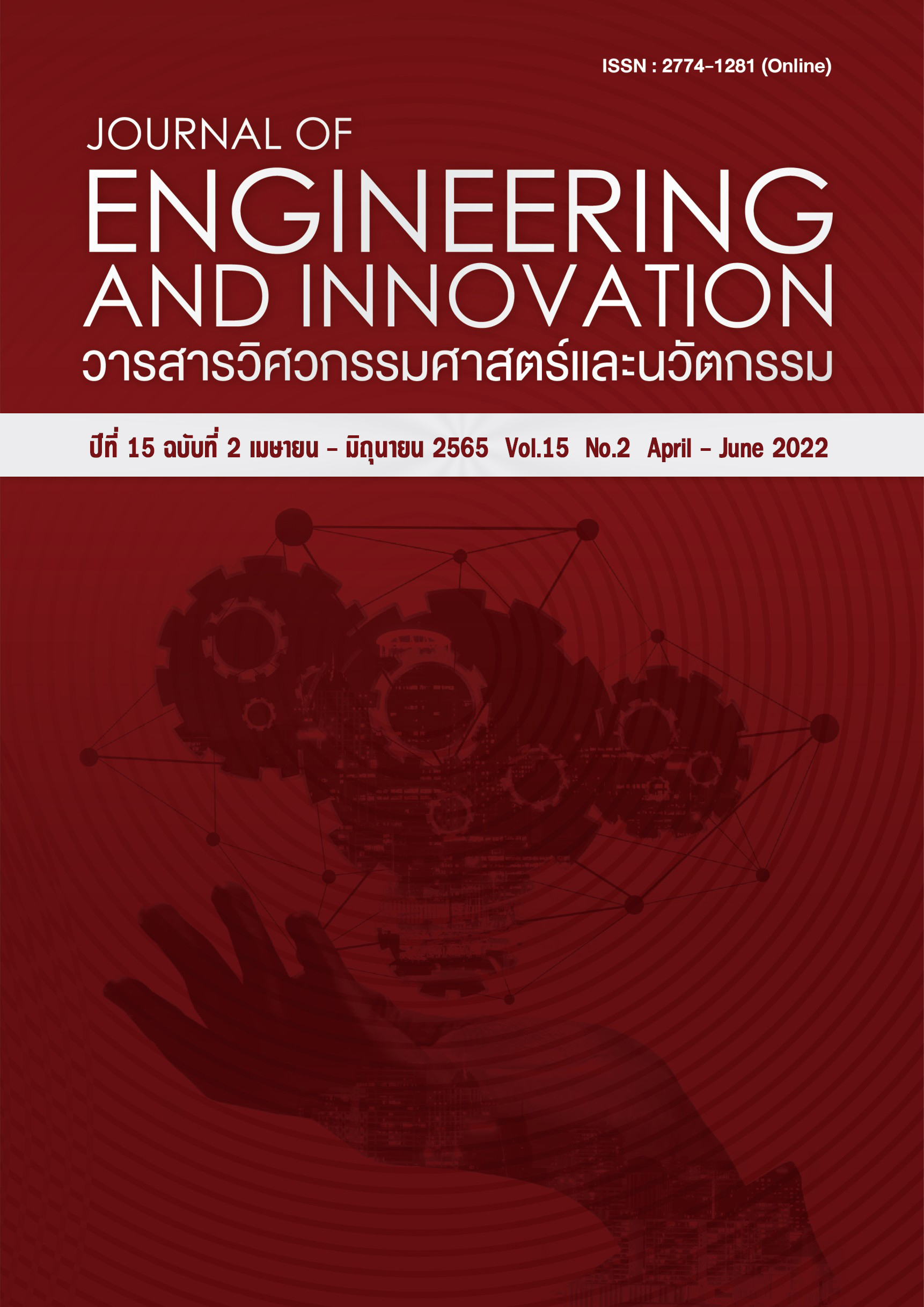Development of road safety audit for bridge section
Main Article Content
Abstract
Bridges are classified as a land transport infrastructure which tends to induce a higher number of annual road accidents. The purposes of this study are to consider essential road safety audit issues and to summarize them to the road’s government agencies, with a focus on bridge approach elements which provide safer means of transportation. The bridge accident data were obtained from Highway Accident Information Management System (HAIMS) and Accident Report Management System (ARMS). The study also reviewed road safety audit investigation measurements currently used in Thailand and worldwide such as those from the Department of Highway (DOH), Department of Rural Road (DRR), and Austroads (Australia). Additional information from experts and specialists by interview and field survey was collected and employed to improve the utility of bridges in Thailand. The study of 36 bridges in Songkhla province results show that the factors in concern are crucial for an establishment of safer and lower-maintenance bridges. The most important components of bridges which may cause road accidents were found to be bridge-neck parts and guardrails. For a higher level of road safety, the entrance and the exit of a bridge structure are recommended, as a first priority, in a future investigation.
Article Details
References
กรมทางหลวง. จำนวนทรัพย์สินทางหลวง (สะพาน). เข้าถึงได้จาก: https://roadnet2.doh.go.th/home. [เข้าถึงเมื่อ 5 กันยายน 2562].
กรมทางหลวงชนบท. รายงานจำนวนทรัพย์สินในเขตทาง (สะพาน) จำแนกตามหน่วยงาน. เข้าถึงได้จาก: http://rm.drr.go.th/. [เข้าถึงเมื่อ 16 กุมภาพันธ์ 2562]
กรมส่งเสริมการปกครองส่วนท้องถิ่น. ข้อมูลโครงสร้างพื้นฐานและสาธารณูปโภค (สะพานคอนกรีต). 2561 เข้าถึงได้จาก: http://infov1.dla.go.th/. [เข้าถึงเมื่อ 1 ตุลาคม 2562].
กรมทางหลวง. รายงานจำนวนอุบัติเหตุจำแนกตามลักษณะบริเวณที่เกิดอุบัติเหตุปี 2557; 2558; 2559; 2560; 2561. เข้าถึงได้จาก:http://haims.doh.go.th/. [เข้าถึงเมื่อ 2 พฤศจิกายน 2562]
กรมทางหลวงชนบท. รายงานจำนวนอุบัติเหตุจำแนกตามลักษณะบริเวณที่เกิดอุบัติเหตุปี 2557; 2558; 2559; 2560; 2561. เข้าถึงได้จาก:http://arms.drr.go.th/report. [เข้าถึงเมื่อ 22 ตุลาคม 2562].
กรมทางหลวงชนบท. รายงานจำนวนอุบัติเหตุจำแนกตามลักษณะบริเวณที่เกิดอุบัติเหตุปี 2562. เข้าถึงได้จาก:http://arms.drr.go.th/report. [เข้าถึงเมื่อ 15 กุมภาพันธ์ 2563].
Rune E, Fridulv S, Andreas L. An analysis of factors influencing accidents on road bridges in Norway. Accident Analysis and Prevention 129. 2019; 1 – 6.
Fridulv S, Rune E, Andreas L. Crash risk on entrance versus exit zones of road bridges in Norway. Accident Analysis and Prevention 134. 2020; 1 - 5.
ศ.ดร.พิชัย ธานีรณานนท์, ศ.ดร.ยอดพล ธนาบริบูรณ์ และ รศ.ลำดวน ศรีศักดา. การตรวจสอบความปลอดภัยทางถนน คู่มือปฏิบัติสำหรับประเทศไทย. สงขลา: 2548.
Austroads. Austroads.AGRS06 - Guide to Road Safety Part 6: Road Safety Audit. Incorporated. Australia: 2009.
กรมทางหลวง. คู่มือการตรวจสอบความปลอดภัยสำหรับถนนที่เปิดให้บริการแล้ว. กรุงเทพฯ: 2548. หน้า 8 - 16.
สำนักงานตรวจสอบความปลอดภัยงานทาง. คู่มือการยกระดับความปลอดภัยงานทางสำหรับถนนที่เปิดให้บริการแล้ว. กรุงเทพฯ: กรมทางหลวงชนบท; 2560.
กรมทางหลวง. การตรวจสอบความปลอดภัยทางถนน ( Road Safety Audit ). กรุงเทพฯ: สํานักอํานวยความปลอดภัย; 2549.
กรมทางหลวง. คู่มือการสำรวจและตรวจสอบสะพาน. กรุงเทพฯ: สำนักก่อสร้างสะพาน; 2555.
กรมทางหลวงชนบท. คู่มือบำรุงสะพานและทางลอด. กรุงเทพฯ: สำนักบำรุงทาง; 2562.
กรมส่งเสริมการปกครองท้องถิ่น. มาตรฐานสะพาน. กรุงเทพฯ: สมาคมวิศวกรรมสถานแหงประเทศไทยในพระบรมราชูปถัมภ; ม.ป.ป.
กรมทางหลวง. คู่มือแนะนำการติดตั้งอุปกรณ์กั้นและสิ่งอำนวยความปลอดภัย. กรุงเทพฯ: สํานักอํานวยความปลอดภัย; ม.ป.ป. หน้า 29 - 39.
กรมทางหลวง. มาตรฐานป้ายจราจร. กรุงเทพฯ: 2561.
กรมทางหลวงชนบท. คู่มือการติดตั้งป้ายจราจร. กรุงเทพฯ: สำนักสำรวจและออกแบบ; 2556.
กรมทางหลวง. คู่มือและมาตรฐานเครื่องหมายจราจรบนพื้นทางและเครื่องหมายนำทาง. กรุงเทพฯ: 2554.
กรมทางหลวง. ข้อมูลงานทางที่เกี่ยวข้องกับงานอํานวยความปลอดภัย. กรุงเทพฯ: สํานักอํานวยความปลอดภัย; 2562.
Jacques B. Maintenance of road bridges and road equipments optimized by a good fatigue design. Procedia Engineering 133. 2015; 255 – 264

